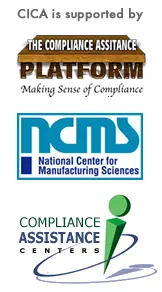
Common Wetlands Violations
Wetlands violations occur when activities disrupt the natural functions of wetlands, potentially impacting water quality, wildlife habitat, and flood control. Violations can range from unauthorized filling or draining of wetlands to damaging their vegetation or hydrology. These violations are often governed by federal, state and local regulations, with enforcement actions taken by EPA, the Army Corps of Engineers, and local authorities.
1. Unauthorized filling or draining. This is a common violation, especially in development/construction projects.
Section 404 of the Clean Water Act specifically addresses the discharge of dredged or fill material into "waters of the United States," which includes wetlands. Before any dredging or filling activity can take place in a wetland, a permit must be obtained.
2. Discharging pollutants. Activities like excavation/clearing, building, and demolition have the potential to contaminate nearby wetlands with pollutants.
Whereas Section 404 of the CWA regulates discharges of dredged or fill material, Section 402 regulates discharges of pollutants that are not dredged or fill material. Developed under Section 402 authority, EPA's National Pollutant Discharge Elimination System (NPDES) Construction General Permit (CGP) addresses stormwater discharges from construction activities, including impacts on wetlands. Construction activities disturbing one acre or more, or part of a common plan of development that will ultimately disturb one or more acres, require a Clean Water Act permit. Operators of construction sites need to obtain permit coverage and develop a Stormwater Pollution Prevention Plan (SWPPP). More information on stormwater permits.
3. Encroaching on wetlands. Construction of buildings, other structures, roads, etc. in close proximity to wetlands can damage these fragile ecosystems.
Where a situation is not covered by federal or state rules/permits (Section 404 or Section 402), the protection of wetlands often falls onto local governments. County/city authorities often employ ordinances requiring vegetative buffer zones and/or building setbacks for wetlands protection. Issuance of building permits is often contingent on the compliance of building plans with these ordinances. Both buffers and setbacks are regulated areas where certain activities may be limited. They are usually required in conjunction with one another.
A setback simply defines a distance from a boundary (e.g., edge of wetland or stream) to a point where certain building activities are prohibited. Setbacks commonly found in ordinances vary from less than 50 feet to more than 100 feet.
Buffers are non-disturbance areas where natural vegetation must be maintained. They are located along the edge of a wetland or stream, within the setback. Leaving existing native plants is the best choice for ease of maintenance and benefits provided. Buffers act as filters, reducing pollutants and sedimentation from runoff, and provide habitat and corridors for various species. Effective buffers can also help control flooding, conserve native plants and wildlife, and support nature-friendly land use.
4. Modifying hydrology. Changing the flow of water in and out of a wetland can destroy its usefulness.
These alterations can be the results of deposition of fill material, draining, dredging and channelization, diking and damming, diversion of flow and addition of impervious surfaces in the watershed, which increases water and pollutant runoff into wetlands. In many cases, these activities would be violations of Section 404 of the Clean Water Act, as discussed previously. However, violations of Section 402 and/or local ordinances can also impact the hydrology of a wetland.
5. Failure to comply with permit conditions: If a permit is obtained for a project in or near a wetland, failure to adhere to its terms can be a violation.
Section 404 permits, construction stormwater permits and local building permits all have specific requirements and conditions that must be met. Permit violations are most often related to required inspections, lack of maintenance, recordkeeping, and reporting.
